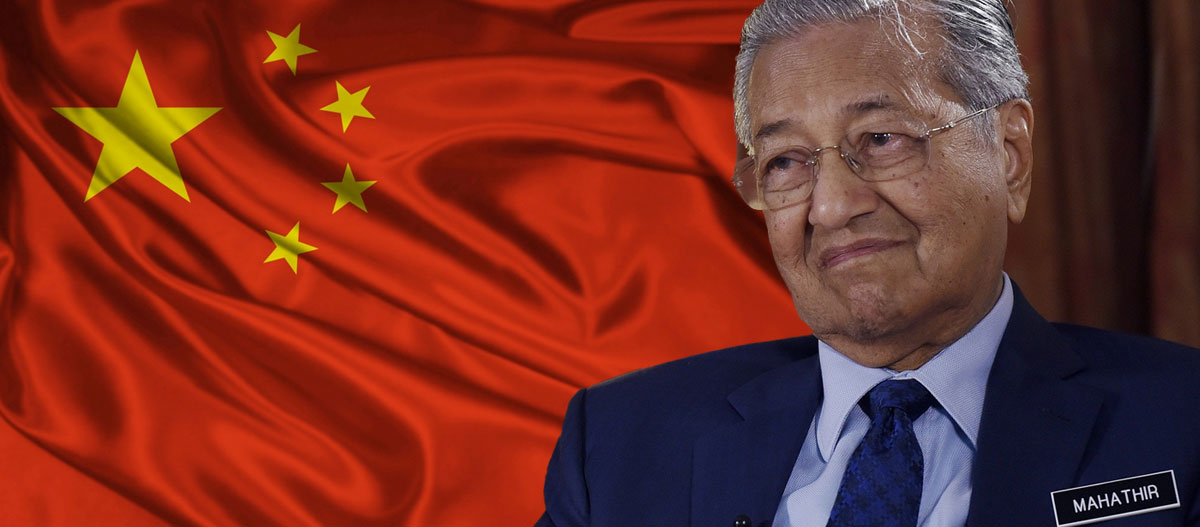Johan Saravanamuttu is Adjunct Senior Fellow with the Malaysia Programme at the S. Rajaratnam School of International Studies (RSIS), Nanyang Technological University (NTU), Singapore. He is also Professor Emeritus of Universiti Sains Malaysia (USM) and Adjunct Professor at University of Malaya’s Asia-Europe Institute. This commentary was published by S. Rajaratnam School of International Studies, Nanyang Technological University, Singapore.
SYNOPSIS
Under Mahathir, in his second term as prime minister, Malaysia has crafted a foreign policy of capitalising on an ascendant China while hedging against the current environment of a more fluid world. In so doing Malaysia is maintaining strong ties with major US allies of Asia, such as Japan.
COMMENTARY
FOR COUNTRIES of Southeast Asia, addressing the ascendancy of China has been de rigueur for some time now. For the most part of the first decade of this 21st Century, the United States loomed large as the major hedge against a rising China with the view that it was the benign regional power and, indeed, the natural political and economic ally. This equation has been altered somewhat since 2016 because of the Trump presidency and the apparent declining prestige of the US in the region.
Malaysian leaders have experienced both the periods of strong US presence in the region and its current decline against the backdrop of China’s rise. The impact on Malaysian’s foreign policy is substantive and visible this time around. Under the premiership of Najib Razak, Malaysia was quick to embrace China’s Belt and Road Initiative (BRI), launched in 2013, with a slew of projects, including the multibillion-dollar East Coast Rail Link (ECRL) stretching across the peninsula, in effect creating a land bridge from the Strait of Malacca to the South China Sea.
Still Upbeat?
Under current premier Mahathir Mohamad, after initial hiccups, the relationship with China has remained upbeat. The ECRL was revived by April 2019, with the cost reduced by a whopping RM21.5 billion (US$5.26 billion). Several other BRI projects, such as the Bandar Malaysia, Malaysia-China Kuantan Industrial Park (MCKIP), with its state-of-the-art Alliance Steel company, as well as the Malacca Gateway were reinstated. China has remained as Malaysia’s largest trading partner for the past 10 years with total trade of RM319 billion, is or about 18% of Malaysia’s trade.

China also rose to become its top foreign direct investor in 2018 but fell behind the US in 2019 possibly due to scuttled 1MDB projects. With China’s Geely’s investing a major stake in Proton since 2017, the national car has seen its sales rocket by 46% in 2019 and its market share rising to 18%. Malaysia is also on track to launch Huawei’s 5G technology by this year having set up a task force for its full adoption by 2023. On the Huawei issue, Mahathir is on record as stating that the Trump policy was “hypocritical”.
In broad geopolitical terms, the growing China presence through BRI penetration into Southeast Asia has elicited a belated response by the Trump administration in the form of the US Indo-Pacific Strategy. The Free and Open Indo-Pacific (FOIP) strategy, announced at the 2017 APEC Conference is to be pursued through US military alliances and ongoing engagements with Japan, South Korea, Australia and the Southeast Asian states.
Malaysia has followed the ASEAN cue through the ASEAN Outlook on the Indo-Pacific announced on 23 June 2019 through an Indonesian-led initiative. While welcoming the idea, the document stated that the Asia-Pacific and the Indian Ocean were closely integrated, emphasising the importance of the evolving norms, principles and rules-based security and economic architectural structures that has been already put in place by ASEAN.
Last Update: 17/01/2023